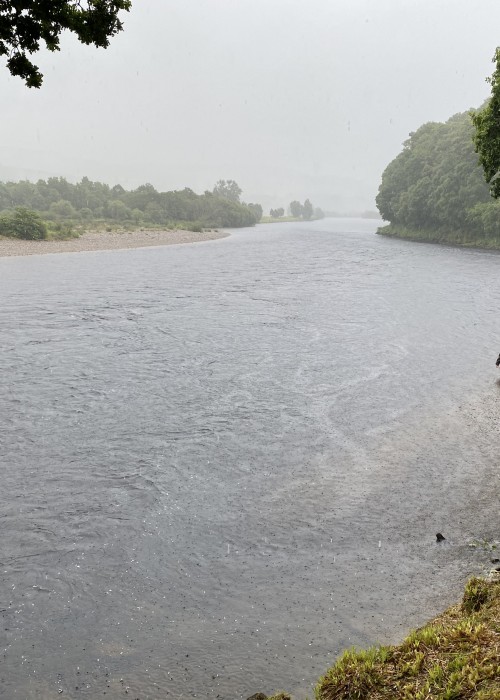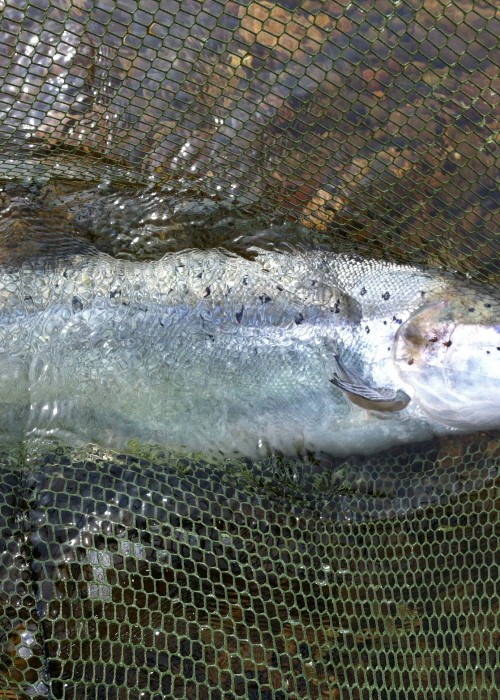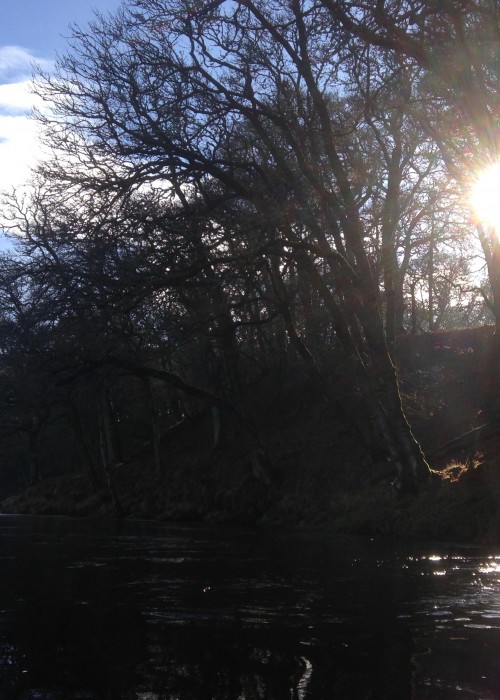





Professional career salmon guide advice on some of the optimal water conditions to catch salmon in during the Scottish salmon fishing season.
Over the decades I've been professionally involved in Scottish salmon fishing I've seen salmon caught in the most unlikely water & weather conditions that turn any books written on this subect completely upside down! In saying that there are indeed certain energy 'moods' of the salmon river that appear often which makes me feel super confident that a salmon will soon surrender itself. In the next few paragraphs I'll elaborate on a few of these water/weather conditions that do that for me.
In the very early Spring months when most of the riverbanks are still frozen and the water and air temperature isn't too far above freezing a bright day with maximum sunlight on the water surface always makes me feel very confident that salmon will co-operate. This sunlight (even though the sun is low in the sky during the early Spring months) just adds a degree or two of warmth to the surface water temperature which is enough to motivate early Spring salmon to move. Once a salmon has been on the move it's in a state of alertness and an alert fish is normally a fish that will take a fly if covered properly. Sunlight and the accompanying warmth from the low Winter sun is a serious piece of natural early Spring salmon fishing kit and being aware of that is of significantly high importance to an experienced angler or ghillie.
During the normal months of the salmon fishing season when there are resident fish holding in the pools I'm always alert when I see a hatch of flies on the water which is a sure sign of a rising barometer. This subtle atmospheric pressure difference is big news to salmon that once fed on hatching invertebrates (triggered by rising pressure) when they were juveniles in the river. This memory recall is present in adult salmon when they return from the sea so look out for brown trout, ducks, gulls, sand martins, swifts or swallows feeding on flies that are emerging from the river surface if you cannot see the actual hatch of flies itself. This is an indicator that resident fish may be willing to take a fly if presented effectively during this rising barometer period which can occur on any fishing day.
When a river starts to rise (but before the river becomes big, debris strewn and coloured) it can often also be a good time to catch salmon. Salmon are aware of fresh water hours before it takes its effect on the river levels but that first inch or two of river level 'lift' puts the smell of fresh water in a salmon nostrils and will usually always turn it into the right frame of mind to take a fly. Once a river has risen to its full potential (after excessive rainfall) and the river water levels start to recede and the water starts to lose any discolouration from the rise it's also a great time to fish for salmon. The rise in the river often relocates salmon into different pools and again if a salmon has been on the move it tends to be fully alert and will readily take a fly if presented properly.
These above points are a few of the basic fishing conditions that fill me with confidence although salmon often write their own rules on this subject. The subtle daily light, water level & temperature changes experienced on a salmon river (for those who are tuned in enough to notice them) are always worth paying attention to as often these will trigger salmon to have a go! Salmon fishing is very much a game of capitalising on these little daily ocurring 'windows of opportunity' so paying attention to these subtle river atmospheric & water variances can give you a big fishing advantage. For more in depth details on how to effectively fish for salmon on the famous rivers of Scotland follow this link on booking a salmon fishing guide in Scotland.